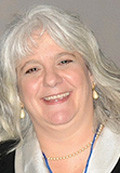Should sources be told their story will be used in sponsored content?
The man on the telephone was a long-time source of mine. He served in local government, always returned my call promptly and was an expert on the topic I was writing about that day.
I'm officially in my first month of establishing a native advertising program at our small community newspaper, the Faribault (Minn.) Daily News, thanks to a fellowship from the Donald W. Reynolds Journalism Institute at the Missouri School of Journalism. The fellowship allowed our company to hire a part-time reporter to take on some of the duties of another editor, who then backfilled my post on a part-time basis so I could build a successful sponsored content program.
In short, it's going very well. In one month, we have more than 30 clients, and my days are busy. But after setting up the appropriate guidelines and pricing, testing the technology, training the appropriate people and establishing a clear boundary between the old me – the managing editor of the newspaper – and the new me – the native advertising coordinator – I had overlooked a key question:
How do I identify myself to potential sources in reporting a story that would become sponsored content?
Faribault is a small town, and in my time here as managing editor I've come to know many people. When I interview a source, I usually identify myself and the paper, tell them about the story I'm working on and ask if they've got time to talk.
Since taking over as native advertising coordinator, I haven't changed that process. Here's why: If done correctly, native advertising is something a publisher might've written anyway, but it's sponsored by an advertiser. The fact that it is sponsored doesn't change how I go about reporting a story.
But this long-time source didn't agree. During the course of casual conversation about why he hadn't seen me around town lately, I told him about the fellowship. He immediately asked if the story I called him for was sponsored content. I told him it was. He expressed his dismay that I had not told him that at the beginning of our conversation.
We ended the conversation amicably, but his concern stuck in my head. So I asked my mentor Roger Gafke, director of development at RJI, to put out the question to his peers to see what they thought. Not surprisingly, this is new ground we're plowing, with new questions arising all the time.
Gafke's colleagues, who included both a current and a former journalism school professor and a freelance writer, seemed to think I need to tell sources the content is sponsored and who the sponsor is.
While I agree with the former, I'm still not sure about the latter, particularly since all editorial content – including sponsored content – is controlled and owned by the publisher. The publisher has the final say on what the content says, how it looks and where it plays. If the same rules of journalism apply to sponsored content as any other form of journalism, why does who sponsored it matter?
The client doesn't have the final word on sponsored content. In fact, that's an important point of distinction between native advertising and, say, an advertorial.
But I'm curious: What do you think?
Jaci Smith, managing editor of the Faribault Daily News, is the project leader for APG of Southern Minnesota's institutional fellowship at the Donald W. Reynolds Journalism Institute. APG of Southern Minnesota will study trends in native advertising and their application for small- and medium-sized media companies. Reach Smith on Twitter at @FDNJaciSmith or by email at jsmith@faribault.com.






